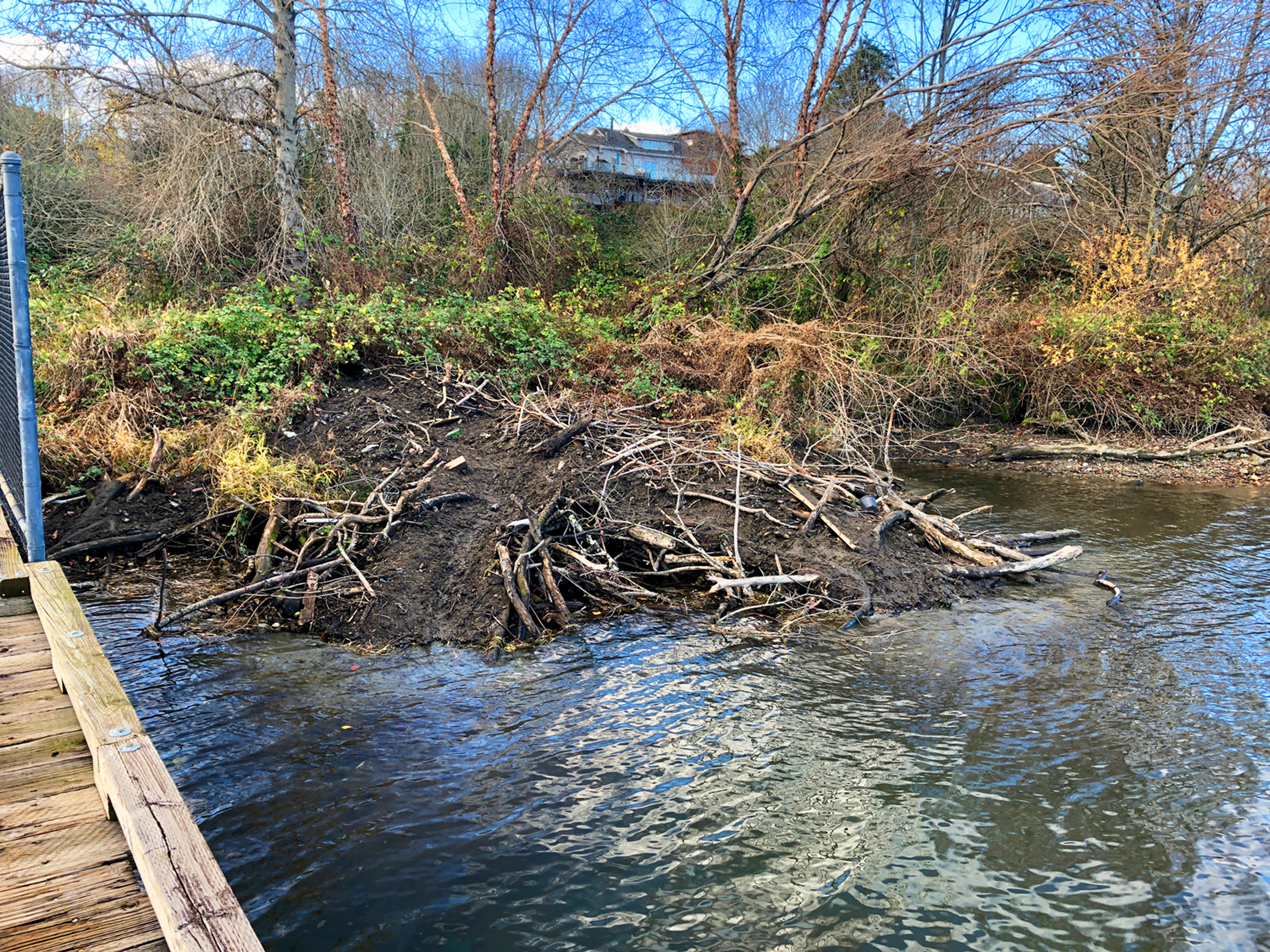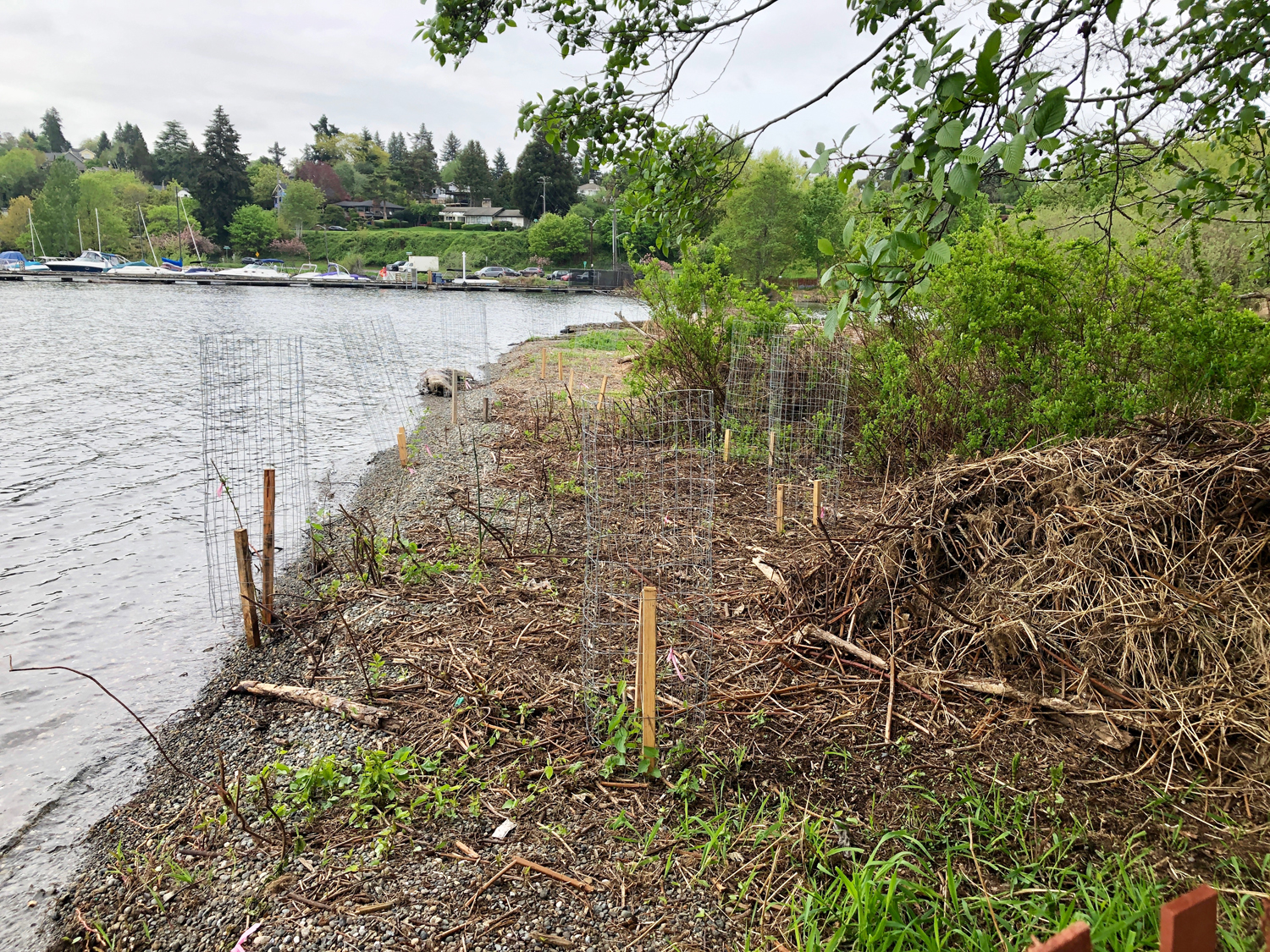Flora and Fauna
Turtles
Several species of freshwater turtles call the Lakewood Sanctuary home. The most prevalent is the Red-eared Slider, a non-native that was likely introduced as a result of pet abandonment. Other turtles found in the Sanctuary include the Western Painted and the Spiny Softshell. On a summer day you can count many scores of turtles basking in the sun.
PLEASE DO NOT RELEASE TURTLES INTO LAKE WASHINGTON. SEE MORE BELOW.
In 2021, the Turtle Survival Alliance North American Freshwater Turtle Research Group (TSA-NAFTRG) established a long-term population study of the turtles in the Lakewood Sanctuary. The study evaluates turtle health, reproductive success, population dynamics, and longevity. The turtles are typically marked with a PIT tag, a passive integrated transponder, in the same way that pets are chipped. To date the researchers, all citizen scientists and volunteers, have captured, recorded, and released more than 100 individual turtles.
TSA-NAFTRG hopes that their research in the Sanctuary will not only help the turtles that live there but also aid in greater turtle research and conservation efforts in the State of Washington and globally. To learn more about the Turtle Survival Alliance and all their projects, please visit turtlesurvival.org. For more information about turtles in Washington, please see about turtles on the amphibian and reptile page of the Burke Museum, the amphibian and reptile page of WA Dept of Fish and Wildlife, and this blog post of the Slater Museum of Natural History.
PLEASE DO NOT RELEASE TURTLES:
It is illegal to release non-native species like Red-eared Sliders into state waters through intentional or unintentional means (RCW 77.135.040). Releasing pets introduces disease or pathogens to the ecosystem that may have catastrophic consequences.
Resources
Lake Washington Boulevard Renovations Project
Seattle Urban Forest Management Plan 2011 Workplan
Urban Forest Management Plan, City of Seattle, 2012 (Draft)
Wild Isle In the City: Tales from Seward Park’s First 100 Years, by Paul Talbert with the Friends of Seward Park.
Beaver
There is a beaver lodge in the sanctuary, located near the entry gate of the Lakewood Marina. The lodge has been there for at least several decades. The lodge most likely hosts a family of three to possibly ten beavers, according to Elyssa Kerr, executive director of Beavers Northwest. Beavers live in family groups consisting of a mated pair and their kits (baby beavers). Young beavers stay with their family until they are two years old when they disperse to new areas. Beavers need water and abundant food to feel safe and comfortable; both are readily available at the Sanctuary including tasty water lilies that grow well in the shallow water. Beavers also enjoy willow, which grows on the shoreline. There are a number of beaver populations sprinkled around Lake Washington (active beaver colonies in Seattle map). Beavers are considered a vital part of aquatic ecosystems, creating and modifying wetland habitats to support greater biodiversity.
Beavers Northwest is dedicated to increasing acceptance and understanding of beavers, to support healthier and more resilient ecosystems. Their work includes education and finding non-lethal solutions to beaver-human conflicts.
Birds
Birds that use the sanctuary include ducks and geese, and it is especially enjoyable to see ducklings and goslings trailing behind their parents in a long line. The baby birds are light enough to scamper across the floating tops of lily pads. Other birds regularly spotted include osprey, bald eagles, red-winged blackbirds, kingfishers and great blue herons.
More information about birds of the area can be found at the Seward Park Audubon Center.
The Lakewood Sanctuary beaver lodge is attached to the shore and made of mud and sticks
Salmon
Chinook salmon spawn in the Cedar River, and juveniles work their way from the river to the Ship Canal and Puget Sound, pausing in the shallow waters for rest and protection.
Flora
Beginning in 2022 a contractor removed thickets of Himalayan blackberries, cutting the canes with a chainsaw and grubbing out the roots with hand tools. More than 500 native plants were then installed, including trees, shrubs and ground covers, according to Matthew Hilliard, gardener with Seattle Parks and Recreation. Vegetation was chosen for habitat value, diversity, and “to make a beaver happy.” Plantings were also done in such a way as to preserve viewpoints. Among the greenery are willow, a favorite of beavers, as well as cottonwood and cedar trees. Some plants are in cages to protect them from hungry beavers.
Looking along the shoreline towards the Lakewood moorage. Green Seattle Partnership grubbed out blackberries (brown sticks piled to the right) and planted native plants and trees, some of which are staked and protected in cages.



